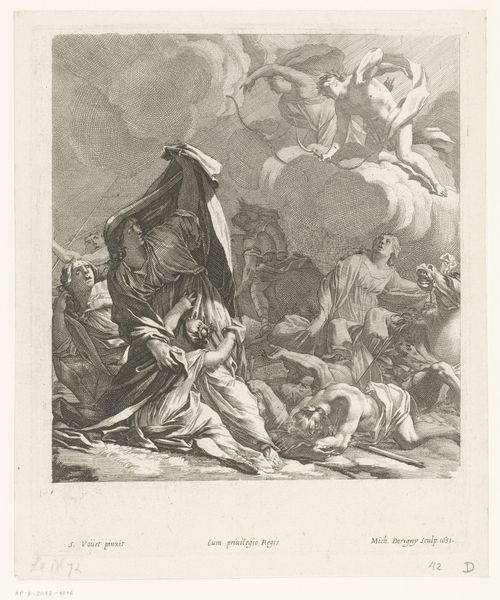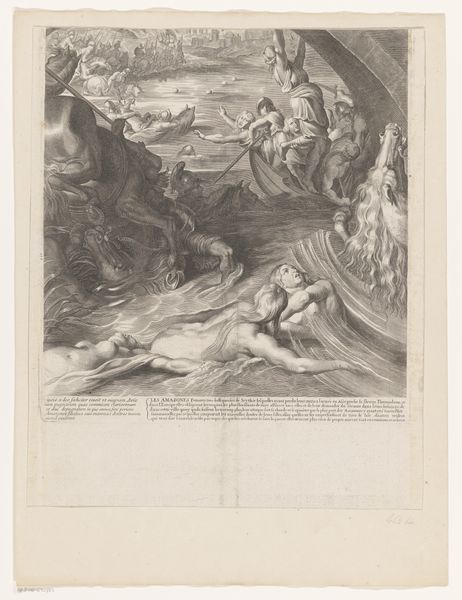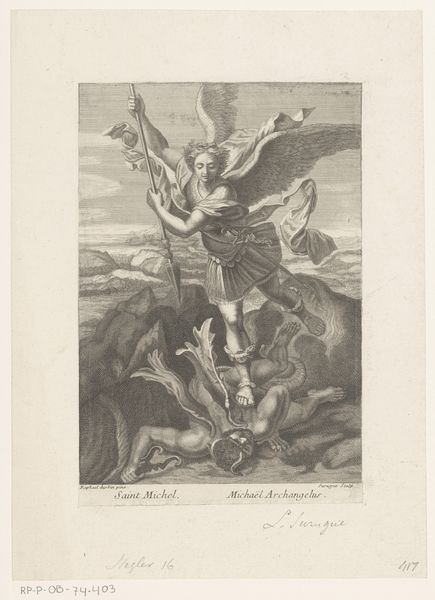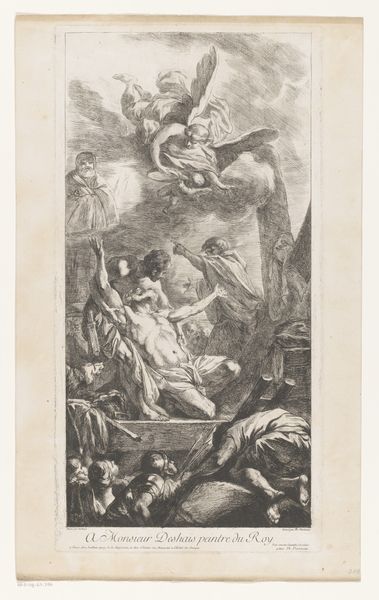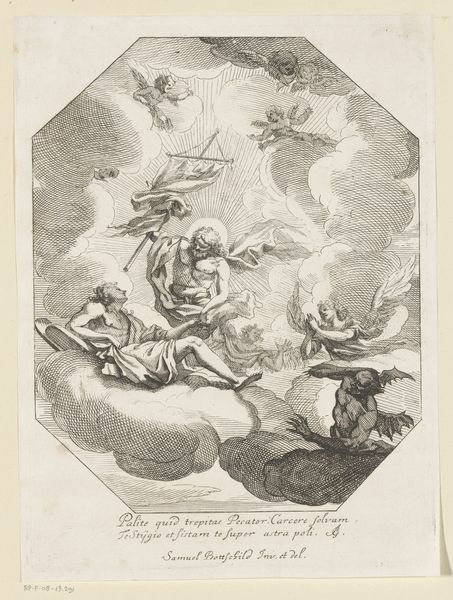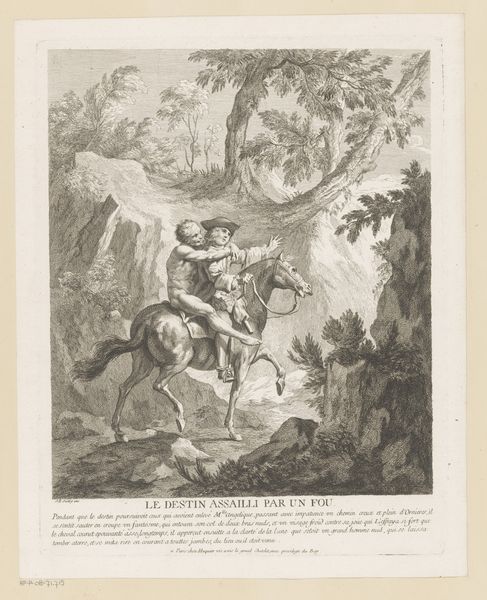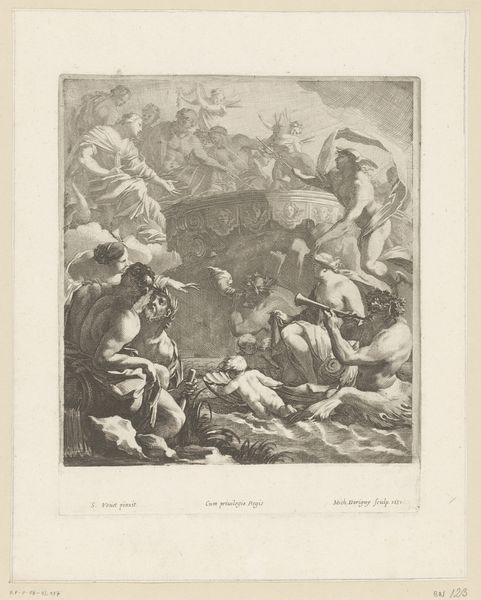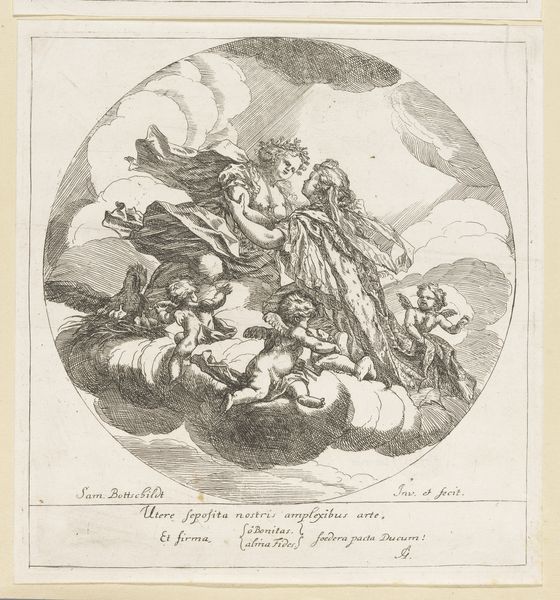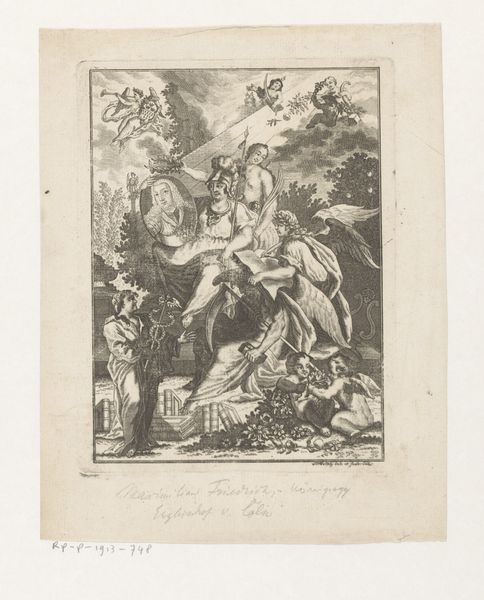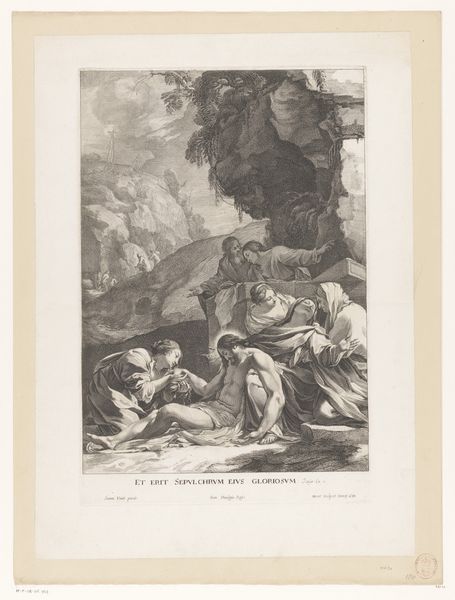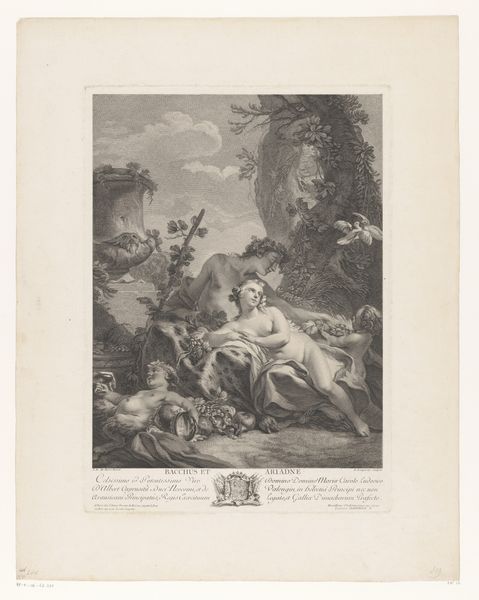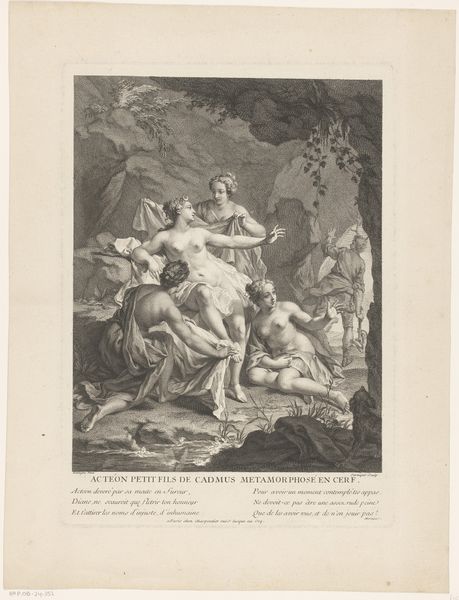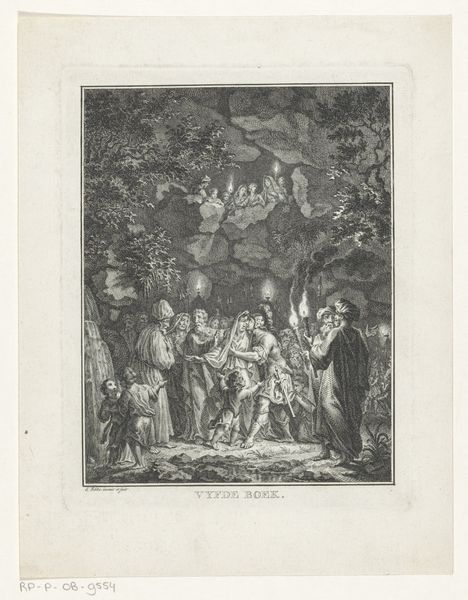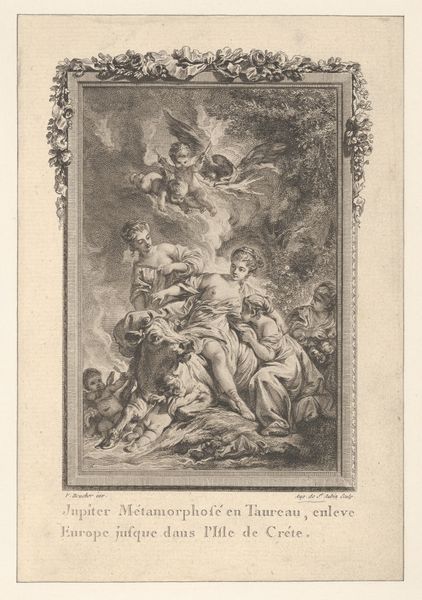
print, engraving
#
allegory
#
baroque
# print
#
figuration
#
history-painting
#
engraving
#
christ
Dimensions: height 331 mm, width 242 mm
Copyright: Rijks Museum: Open Domain
Curator: Here at the Rijksmuseum, we have an engraving by Charles François Silvestre from around 1700 titled "The Resurrection of Christ." It's a compelling piece of Baroque printmaking. Editor: The first thing that strikes me is the drama. The high contrast creates such dynamism and theatrics—the almost blinding light around Christ. It really pulls you into the scene. Curator: Baroque art often served as propaganda. Consider the context of the late 17th century; religious conflicts shaped political landscapes. This piece underscores the power of the Catholic monarchy, dedicated, as the inscription suggests, to Philip V of Spain. Editor: Absolutely. There's such overt symbolism—Christ rising triumphantly, flag in hand, while Roman soldiers cower. This image powerfully promotes Catholic authority, even superiority. It reinforces narratives of dominance and divine right. But who gets to tell these stories and whose perspective matters when representing narratives of such magnitude? Curator: The engraving is an example of dissemination of imagery on a mass scale and reflects specific theological interpretations dominant at the time. These depictions circulated widely, solidifying a particular visual vocabulary for religious events. Editor: And that visual vocabulary isn't neutral, is it? The active, illuminated Christ versus the passive, shadowy soldiers—it sets up this dichotomy, effectively visualizing power structures and justifying existing hierarchies through religious narrative. The artist isn’t merely depicting a scene but constructing a viewpoint. Curator: We should also note the technical mastery apparent in the engraving. The textures, the gradation of light... Editor: True, the skill involved is undeniable, but understanding that skill also requires questioning its purpose. What sociopolitical function did artistic prowess serve in constructing this kind of imagery? It's essential we continuously consider and contextualize those artistic and historic purposes. Curator: It does make you consider how these images cemented a specific cultural understanding. Thank you for sharing your insights. Editor: Likewise, thinking about art’s ability to shape, and at times, manipulate perspectives is key to our discussions, even today.
Comments
No comments
Be the first to comment and join the conversation on the ultimate creative platform.
